93 Search Results for mini schedule
July 9, 2012
by Carole Zangari -
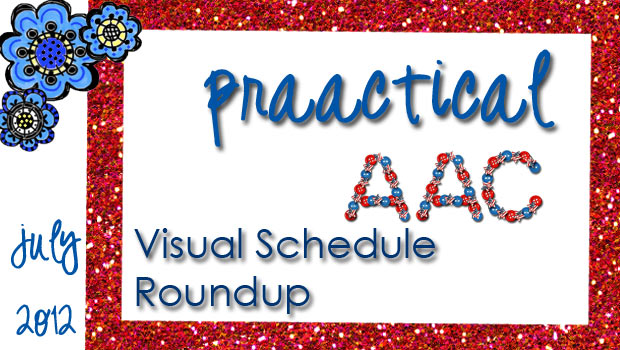
Summer is not the season we typically connect with routine, predictability, and structure. Nonetheless, if strategy really works to make someone’s life better, we try to use it whenever possible. Visual schedules work. They REALLY work. So whether you’re using them this summer or just preparing for the fall, we hope you enjoy this round-up of our past posts on Visual Schedules. – Riddle Me This (clinical rationale) Tech it Up’- 5 Visual Schedule Apps (tools) Visual Strategies 411 (implementation) PrAACtical Mini Schedules (implementation) Ideas for Teaching the Use of Visual Schedules (implementation) Object Schedules (video) Strategy of the Month: Types of Visual Schedules (implementation) Visual Schedules in Action (video) Building Complex Schedules (video) Schedule Changes (Video) AAC at Home: Visual Schedules and Supports Schedules and Choices (implementation) Visual Schedules & Inclusion (video) A Myth About Visual Schedule Lives On (implementation) Visual Schedule Wrap-Up (implementation + resource list) –
June 8, 2012
by Robin Parker -
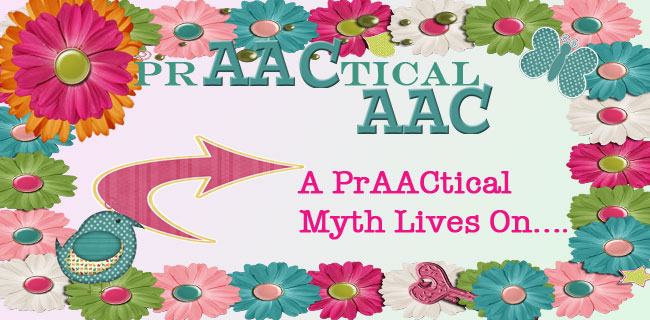
A myth about visual schedules continues to rear its ugly head in a prAACtical situation. Another family was instructed to discontinue a visual schedule because “the schedule will become a crutch, the schedule will result in dependence, and the schedule can not be used forever or all over town”. I need to start with an apology for not following up after my earlier post when I first realized that the visual schedule myth lived on. Maybe my punishment was hearing the same myth repeated (though it doesn’t seem fair that a student was impacted in the process). But maybe it was a teaching opportunity for me. It certainly made me respond quickly. So now for the down and dirty summary of my conversation with the other ‘professional’ . Having the conversation was my attempt at helping my student receive the visual language supports that she needed. I have to admit, it... [Read More...]
April 30, 2012
by Robin Parker -
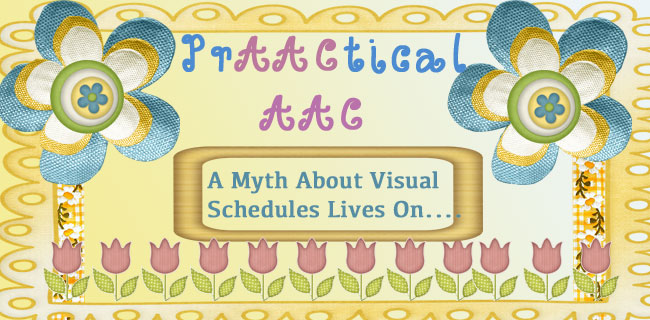
Nooooo, not again. A myth about visual schedules continues to rear its ugly head in a prAACtical situation (maybe we can reframe it into a learning opportunity??). Some history- A parent of twin girls with autism (age 15 and two other younger children– yes total 4) stopped by our office to pick up some autism awareness materials yesterday (a super busy mom in so many ways —going out of her way to help our community). As we were exchanging pleasantries and getting updates on how the girls were doing, we heard something that continues to surprise us–(and not in a good way). What did we hear? We heard that the girls were doing relatively well (not the surprising comment) but that mom was extra busy because the girls were no longer independent in taking their showers. They could do it by themselves but didn’t like the sensory input of soap... [Read More...]
April 14, 2012
by Carole Zangari -
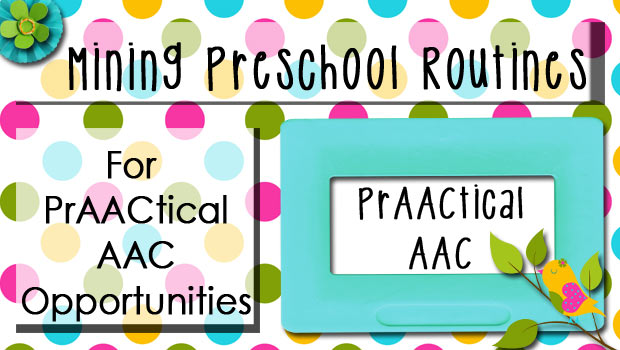
Meet Jenna, a spirited little girl with developmental delays who is learning to communicate using multiple modalities. Follow her along this morning as she goes to her preschool and gets dozens of opportunities to practice the AAC skills she is learning. 101 opportunities to practice target skills before lunch? It’s a piece of cake with this well-oiled preschool team! Jenna’s communicative functions are noted in CAPS and her communication modalities are in italics. – Let’s watch and see how Jenna is getting all that practice in as she goes about her day. – 7:55 1. Enter the building, pause at a trained adult communication partner (receptionist) for Jenna to GREET with a vocalization and wave 2. ANSWER a social question (“How are you?”) with gesture (thumbs up) 3. Say GOODBYE with a wave 4. Once in the classroom, repeat GREETINGS with teacher, aide, and a friend. 5. ASK for HELP putting... [Read More...]
March 24, 2012
by Carole Zangari -
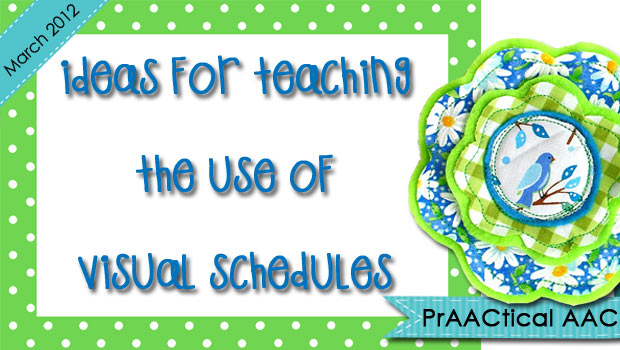
There’s nothing more depressing to us than walking into a classroom in the spring and seeing pristine visual schedules. Why? Because it probably means that the students aren’t really using them. We cheer when we see schedules that are rumpled and dog-eared, not shiny. Show me a battered and tattered visual schedule, and I’ll show you one that gets used every day. Sadly, that’s not always the case. – The bridge between having a visual schedule and consistently using it is one that many learners don’t seem to cross. Here are some of our ideas for helping your AAC learners to the other side. – 1. Have a plan to teach the schedule. If you are working one-on-one with a learner, you can easily implement the schedule and get them using it with most-to-least prompting. If you’re working with a group or a classroom, consider staggered implementation. Teaching 12 beginners... [Read More...]
March 17, 2012
by Carole Zangari -
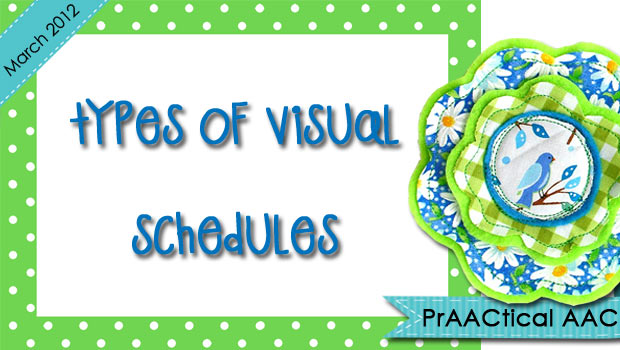
When people think about visual schedules, they tend to think about a classroom schedule with PCS for each major activity of the day. These are great and we look for them whenever we do classroom visits. In this post, we hope to inspire some of you to use other types of visual schedules as well. We haven’t quite worked out the right terms for these (and we welcome your suggestions) but, conceptually we know that there are three main levels of visual schedules. Each level conveys information about what is happening in a specific segment of time. – At the Calendar Level, the schedule represents what’s happening throughout the month and/or week. – At the Schedule Level, we’re representing the events of a particular day, a portion of a day, or a session (or class period). – At the Task Level, the schedule reflects discrete steps of an activity or... [Read More...]
March 12, 2012
by Robin Parker -
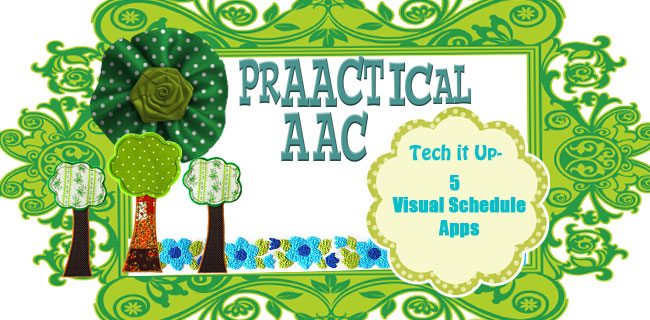
We have been writing a lot about schedules. Schedules can be created by using tools ranging from no-tech to high tech. Here are 5 great visual schedule apps to help with ‘teching’ up the process. We think it is important to let you know that ALL of the app developers provide information about the rationales behind schedules and visual learning which adds to our educated AAC consumers. One of our priorities in ‘blogging’ was to get the information about AAC systems and visual strategies out to more people with the hope that AAC systems will be provided to ALL cpeople who would need it It is great to see app developers prioritizing this as well. **Just 2 notes: for our own personal and business schedules we still use a combination of no-tech to high-tech options) and apps are listed in no particular order Choice Works $14.99 by BeeVisual + designed... [Read More...]
February 9, 2017
by Carole Zangari -

Looking for ways to build fluency with core vocabulary as you prepare for Valentine’s Day festivities? Here are a few suggestions. Making Cards: Get your crafting on and make some cards, like these from Christine Dunbar. Core word practice: pronouns (I, you, it, they); verbs (do, make, get, help, like); descriptors (pink, little, some), prepositions (on), determiners (this, that, these, those); interrogatives (what, where) Deliver the Cards: Have some fun being a mail carrier, delivering Valentine cards, and interacting with all the recipients. We love this mini schedule by the Considerate Classroom. Core word practice: pronouns (I, you, it, we); action verbs (go, give, get, see, take); locatives (here, there); social words (hi, thank you); determiners (this, these); interrogatives (who, where) Play Valentine Bingo: Thanks, Katie Millican and Jessica Maldonado! Core word practice: pronouns (me, my, he, she); verbs (can, have, need, get, want, play); descriptors (big, round, red); interrogatives (where,... [Read More...]
October 26, 2013
by Robin Parker -
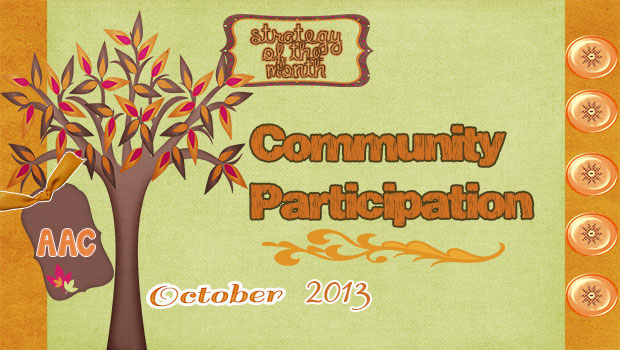
Community participation and communication for AAC users is an integral part of of developing, growing up, and having inclusive opportunities. We often relate community participation to quality of life indicators. Community participation for AAC users begins from the… beginning. Young children can order in restaurants, use picture menus, and have access to many inclusive events. As children grow into adolescents and adults, community participation involves post secondary options, employment, and community living. Perspectives from AAC Users Have communication displays and devices available at ALL times– You need access to a communication system(s) to participate in all situations. Remember to take AAC with you. The sooner the AAC user becomes responsible for taking or telling someone to take the device/displays with them the easier it becomes. For mobile technology systems, there are rugged cases that withstand wind, water, even medical waste (see Lauren Enders Pinterest boards for case and accessory options).... [Read More...]
September 21, 2013
by Carole Zangari -

Like some of you, we are often met with skepticism when we encourage teams to work on literacy skills with individuals who are still learning the very basics of communication. Recently, we had the opportunity to begin this journey anew, and model a literacy lesson for kindergartners who have no formal communication system, are not answering yes/no questions, and do not consistently select preferred items when offered choices. Why work on literacy with students who are not routinely expressing their basic preferences? Because the longer we wait, the longer it will take to get there. Because it offers wonderful opportunities to build communication, too. Because when other people see us teaching reading and writing, it changes their perception of the student in a positive way. Because they will enjoy it. Because there are mandates for us to address the general education curriculum. Because if we set the bar high and... [Read More...]









